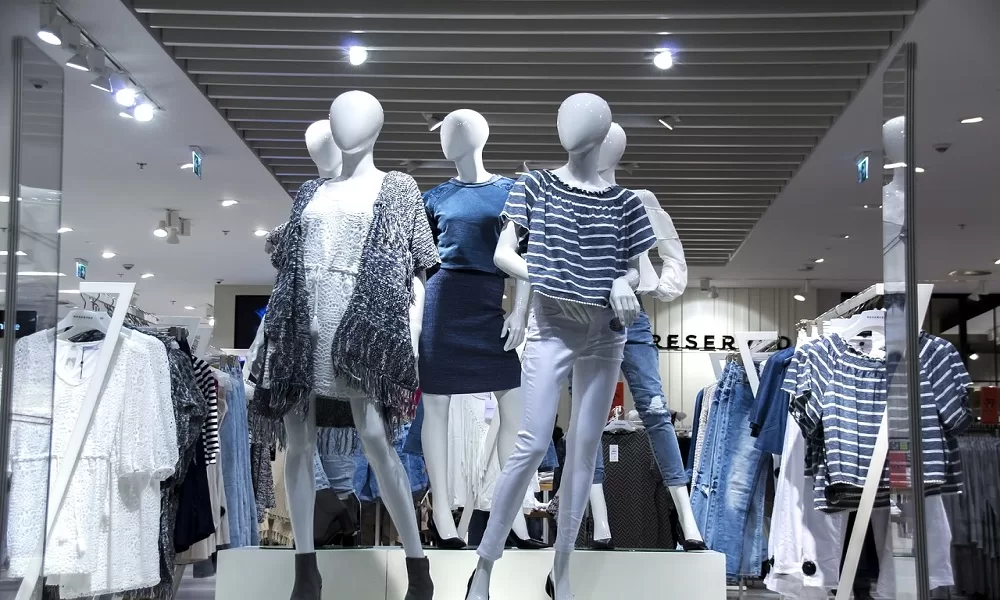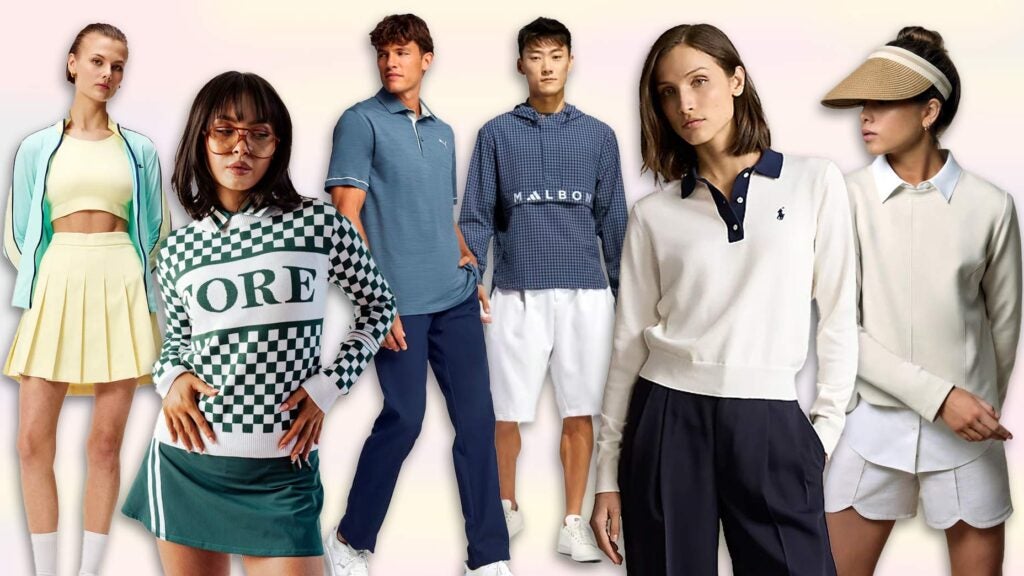How Fabric Weight Impacts Comfort in Branded Clothing
How Fabric Weight Impacts Comfort in Branded Clothing
Blog Article
Recognizing Clothing: The Importance of Fabric Options in Your Closet
The choice of textile in clothing plays a crucial duty in both aesthetic appeals and performance. Various materials supply differing levels of resilience, breathability, and convenience, straight affecting the user's experience. Understanding these subtleties can improve one's wardrobe markedly. Several overlook exactly how these options can influence not just personal design, however also sustainability. What material choices could redefine your closet and straighten it with both design and duty?
The Duty of Material in Fashion and Capability

Usual Fabric Types and Their Qualities
When picking clothes, recognizing the characteristics of usual material types is crucial for making informed selections. Cotton, a widely-used all-natural fiber, is recognized for its convenience, softness, and breathability, making it appropriate for sportswear and everyday garments. Bed linen, another all-natural alternative, boasts exceptional moisture-wicking homes and an unique structure, perfect for cozy climates.Wool, commonly favored for its heat and durability, varies in fineness; merino woollen is soft against the skin, while coarser types are used for outerwear. Synthetic fabrics like polyester and nylon offer longevity and resistance to wrinkles, making them prominent for activewear and travel garments. Blends, which combine artificial and all-natural fibers, can boost performance while keeping convenience. By identifying these fabric qualities, individuals can pick apparel that aligns with their way of life and visual choices.
Breathability and Comfort: Choosing the Right Fabrics for Different Climates
Choosing the right materials for numerous climates can greatly enhance convenience and total wearability. Breathable products are crucial in warm climates, as they allow air circulation and dampness evaporation. Fabrics such as cotton, linen, and moisture-wicking synthetics efficiently attract sweat far from the body, maintaining the user cool and dry. Conversely, in cooler environments, thicker fabrics like woollen or fleece offer insulation while preserving breathability, making sure warmth without overheating.Additionally, the choice of textile weight plays a vital role; lightweight fabrics are preferable for summer season, whereas larger alternatives are fit for wintertime wear. Comprehending the one-of-a-kind properties of each textile enables individuals to clothe suitably for differing weather. Ultimately, selecting breathable and comfortable materials tailored to certain environments can greatly enhance day-to-day comfort and enhance the overall experience of using clothing.
Toughness and Treatment: Just How Material Affects Long Life of Your Closet
Selecting the best materials can greatly influence the sturdiness and treatment requirements of a wardrobe. Fabrics such as cotton and polyester are known for their strength and simplicity of upkeep, making them excellent for daily wear. On the other hand, fragile materials like silk and shoelace call for more careful handling and specialized cleansing techniques, which can enhance the moment and initiative needed for care. Branded Clothing.Durability is also influenced by the fabric's weave and finish; snugly woven fabrics often tend to stand up to wear and tear much better than loosely woven alternatives. Additionally, synthetic blends often supply improved longevity, integrating the most effective qualities of numerous fibers.Understanding the treatment guidelines for every textile is necessary, as incorrect washing or drying can result in early wear. Eventually, choosing long lasting products can bring about a longer-lasting wardrobe, minimizing the frequency of replacements and adding to a more sustainable style choice
The Impact of Textile on Fit and Silhouette

Lasting Textile Selections: Making Eco-Friendly Choices
The impact of textile extends past fit and shape to encompass environmental elements, motivating a growing interest in lasting material choices. Environmentally friendly fabrics, such as natural cotton, hemp, and Tencel, are obtaining traction amongst customers that focus on sustainability in their wardrobes. These products are frequently generated with less chemicals and water, minimizing their ecological footprint.Additionally, recycled materials, made from post-consumer waste, offer an innovative solution to the textile market's air pollution problem. Brands progressively accept transparency in their sourcing techniques, permitting customers to make educated decisions regarding their purchases.Choosing lasting materials not just supports moral techniques but additionally encourages the style market to adopt more liable manufacturing approaches. As awareness of ecological concerns climbs, people are advised to assess the lasting effect of their material options, promoting a movement in the direction of a much more ecologically conscious and lasting strategy to style.
Elevating Design: Exactly How Fabric Can Transform an Outfit
While numerous might concentrate on color and cut when picking an attire, the option of material plays a crucial role in raising style and boosting total appearance. Different products share distinctive moods and messages; as an example, silk exudes luxury and class, while jeans provides an informal, kicked back vibe. The appearance and drape of a fabric can significantly change the silhouette, with organized materials supplying a sleek look and softer ones producing a more fluid, unwinded aesthetic.Moreover, the weight of the material influences wearability across periods. Lightweight textiles like bed linen and cotton are excellent for summertime, you can find out more while larger materials such as woollen and velour supply heat and style in colder months. Comprehending textile residential properties, such as breathability and stretch, additionally encourages people to make enlightened options that boost comfort without endangering design. Ultimately, the right textile can change an attire from average to remarkable, making it an essential factor to consider in any type of wardrobe.
Frequently Asked Inquiries
How Do I Recognize the Material Material of My Apparel?
To identify textile content, one can analyze treatment tags, conduct melt tests for fiber identification, or consult fabric swatches. These methods assist set apart materials, guaranteeing notified options for clothes care and upkeep in daily wear.
Can Fabric Choice Affect My Mood or Confidence?
Material choice can greatly impact an individual's mood and confidence. Branded Clothing. Certain products may evoke feelings of comfort or sophistication, while others can really feel uncomplimentary or restrictive, eventually influencing self-perception and psychological well-being throughout the day
What Fabrics Are Best for Sensitive Skin?
For people with delicate skin, natural fabrics like bed linen, bamboo, and cotton are typically advised. These materials are breathable, hypoallergenic, and much less likely to trigger irritability, making them appropriate selections for comfort and skin wellness.
How Do I Properly Laundry and Look After Different Fabrics?
To correctly care and clean for different materials, one have to think about each material's specific demands, including temperature level setups, cleaning agents, and drying out techniques, making sure long life and maintaining the fabric's initial qualities for excellent usage.
Exist Particular Fabrics for Athletic or Performance Put On?
Athletic or efficiency wear typically utilizes textiles such as nylon, spandex, and polyester. These materials are created for moisture-wicking, breathability, and adaptability, enhancing motion and comfort throughout exercises while supplying resilience and support. On the other hand, in cooler environments, thicker materials like wool or fleece provide insulation while keeping breathability, making sure heat without overheating.Additionally, the selection of material weight plays a crucial function; light-weight fabrics are preferable for summer, whereas heavier options are matched for winter season wear. In contrast, fragile products like silk and shoelace require even more cautious handling and specialized cleansing techniques, which can enhance the time and effort required for care.Durability is also influenced by the textile's weave and finish; snugly woven materials tend to withstand wear and tear better than freely woven options. In contrast, stiff materials can limit movement yet give a timeless, sleek look.Moreover, the thickness and appearance of the fabric can affect the aesthetic perception of body shape. The effect of textile extends beyond fit and shape to incorporate environmental variables, prompting an expanding interest in sustainable textile choices. The structure and drape of a material can significantly alter the shape, with organized fabrics giving Full Article a refined appearance and softer ones developing a more fluid, kicked back aesthetic.Moreover, the weight of the material affects wearability across periods.
Report this page